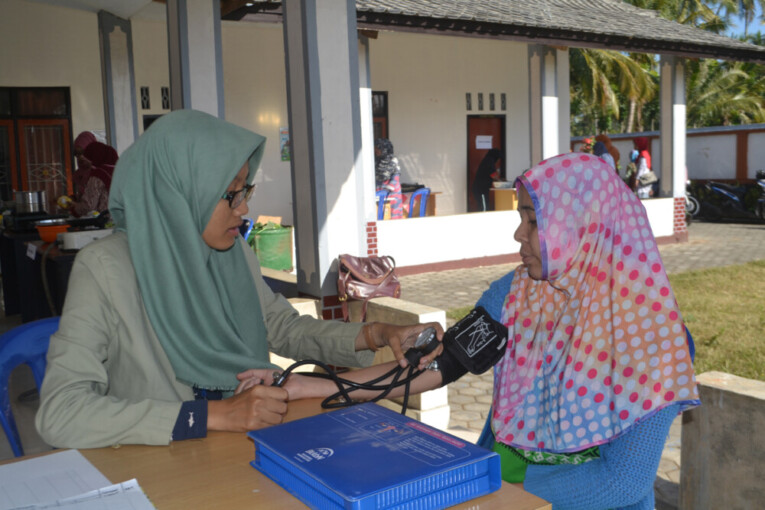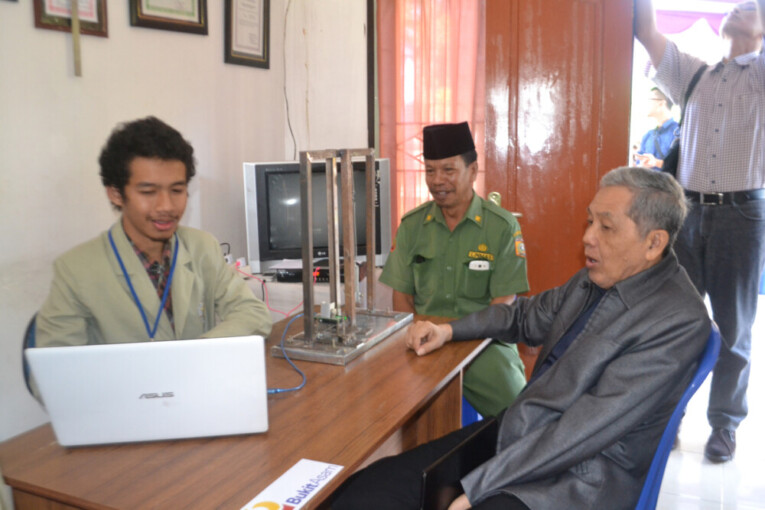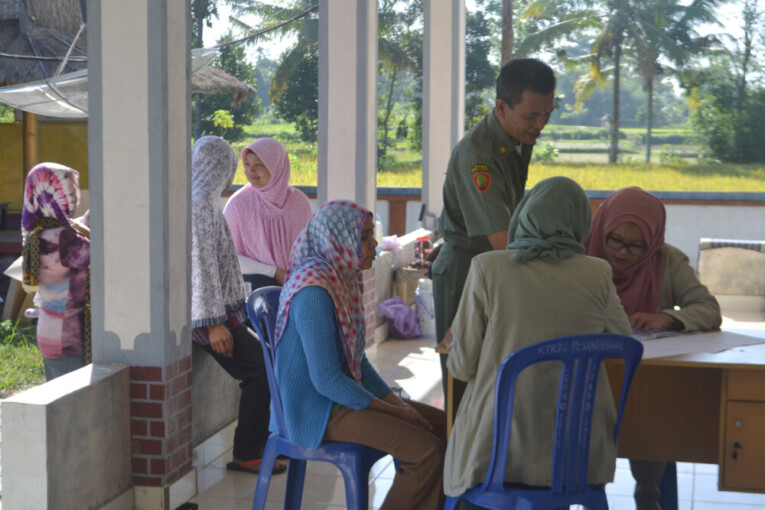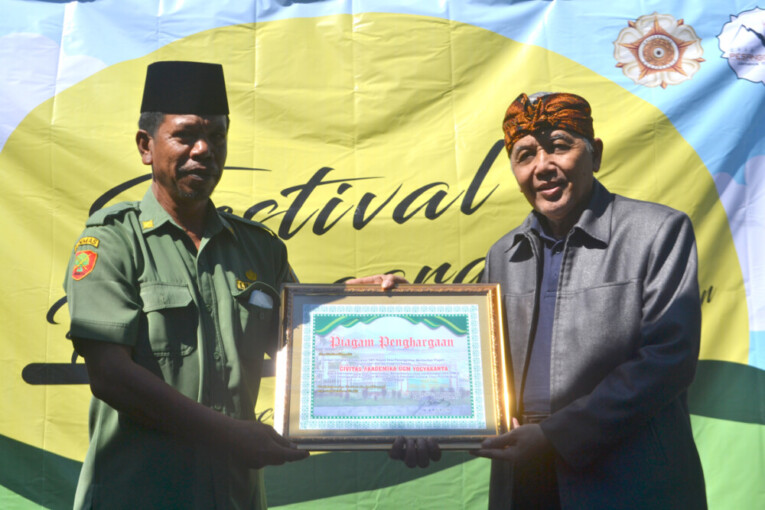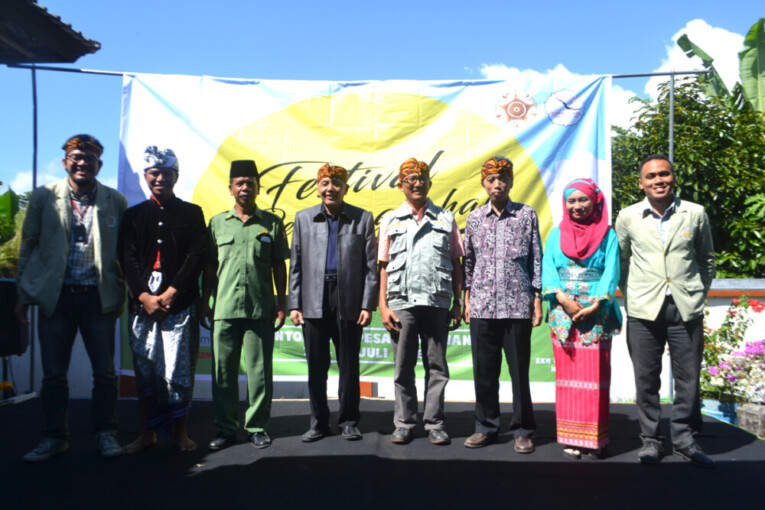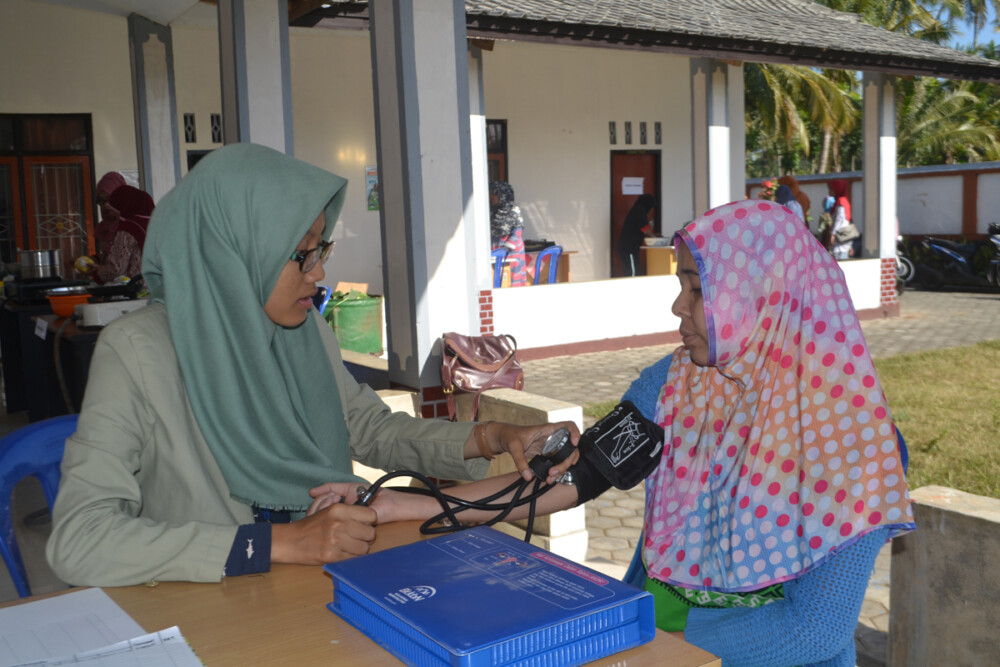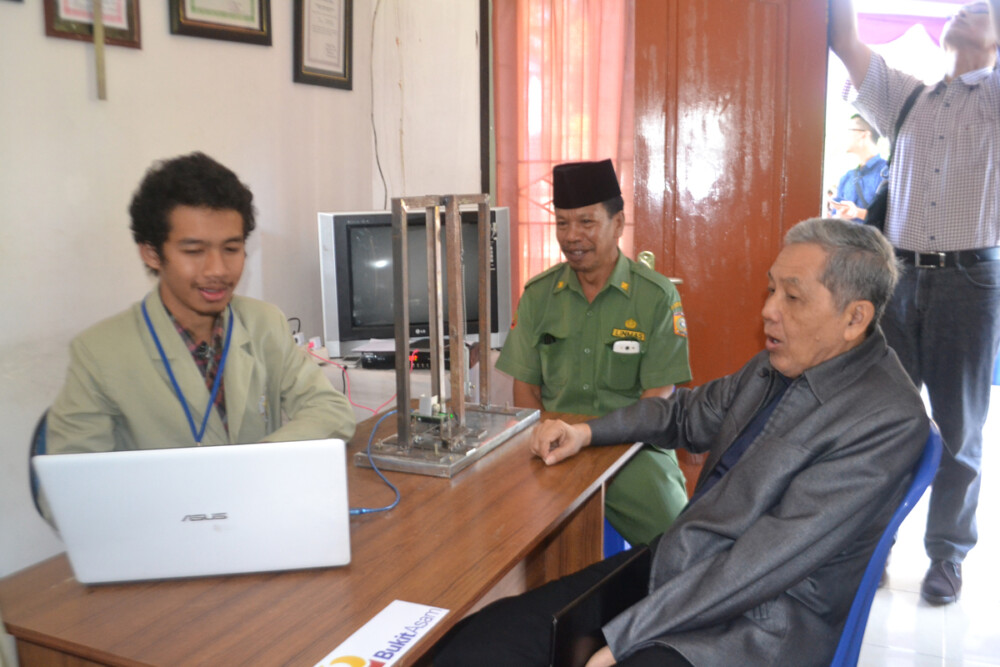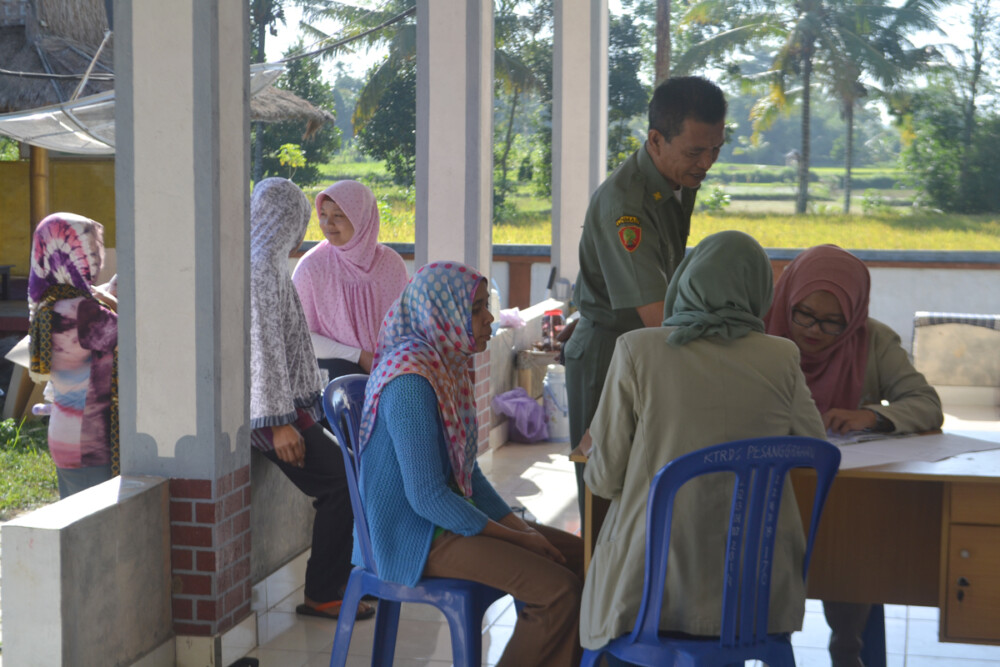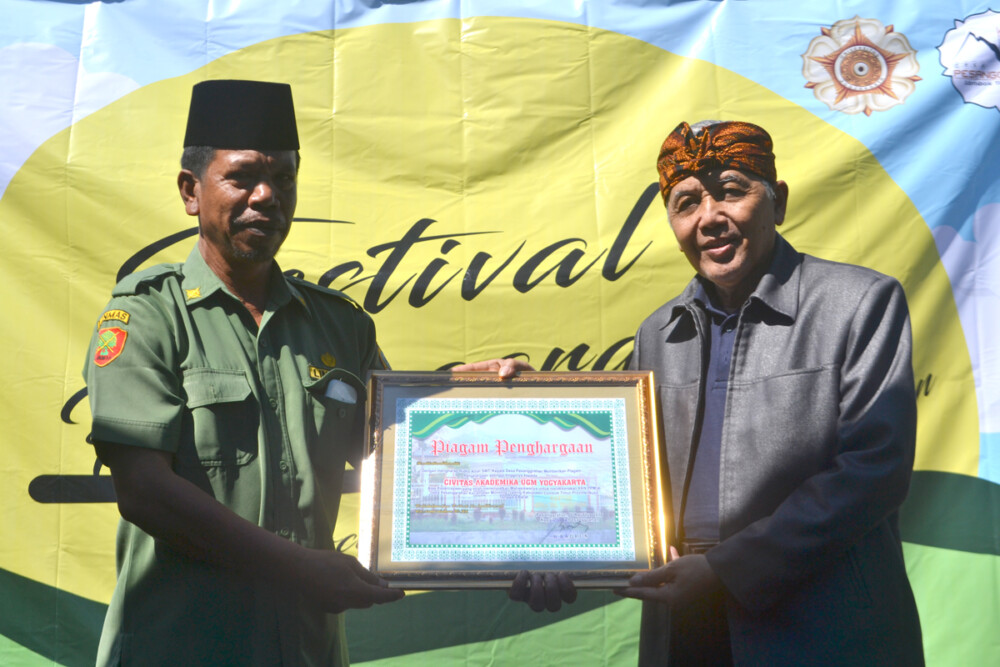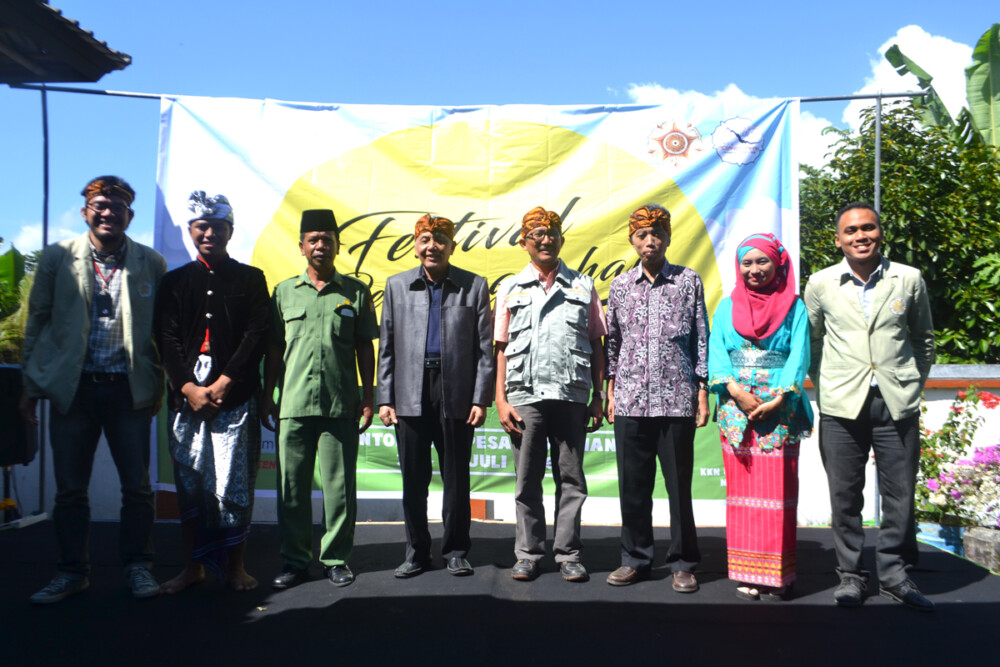UGM Vice-Rector for Research and Community Service, Prof. Dr. Suratman, M.Sc., paid a visit to East Lombok and Central Lombok regencies on Saturday (30/7) during a Student Community Service programme for community empowerment. Suratman, accompanied by Research Director, Prof. Sri Raharjo, and Community Service Director, Ir. Irfan Dwidya Prijambada, M.Eng, Ph.D., witnessed the opening of the Pesanggrahan Festival that is initiated by the students at the office of village chief of Pesanggrahan, Montong Gading area, East Lombok regency.
Village chief, H. Badrun, appreciated the student community service programme that has run for three years consecutively in the area. He said the project undertaken by the students had helped improve the local economic potential, especially for agriculture products such as corn and rice. “There is an increase of 60% (after the programme),” he said. He said the local residents also welcomed the project while the regency level government even supported the programme financially.
Student coordinator in the area, Rifki Faishal Lutfi, said apart from the main agricultural programme, the students also give disaster mitigation to increase the awareness of the local people of a resilient society towards disaster risks. Pesanggrahan village that houses 7758 people is situated some 30 kilometers away from Mt.Rinjani, which is prone to lahars, and volcanic and tectonic earthquakes threats. The people are also asked to plant trees on Mt. Rinjani. Dental student, Astriana, said they also conducted health coaching for the local people.
Prof. Suratman said this year UGM dispatched over 6,000 students to various regions in the country for the Student Community Service programme. In Pesanggrahan, said Suratman, the project focused on disaster mitigation. He further appreciated one student, Dimas Fajrian Nugroho (Electronics and Instrumentation student) that had made a tool for earthquake detection. Simple as it is, it can be developed further and applied for the Pesanggrahan village and sorroundings. Dimas said he used a pendulum for the tool that will record digitally the earthquakes that happen. He said he would contact the local meteorology and geophysics agenices as well as regional planning agencies for improvement of the tool.



